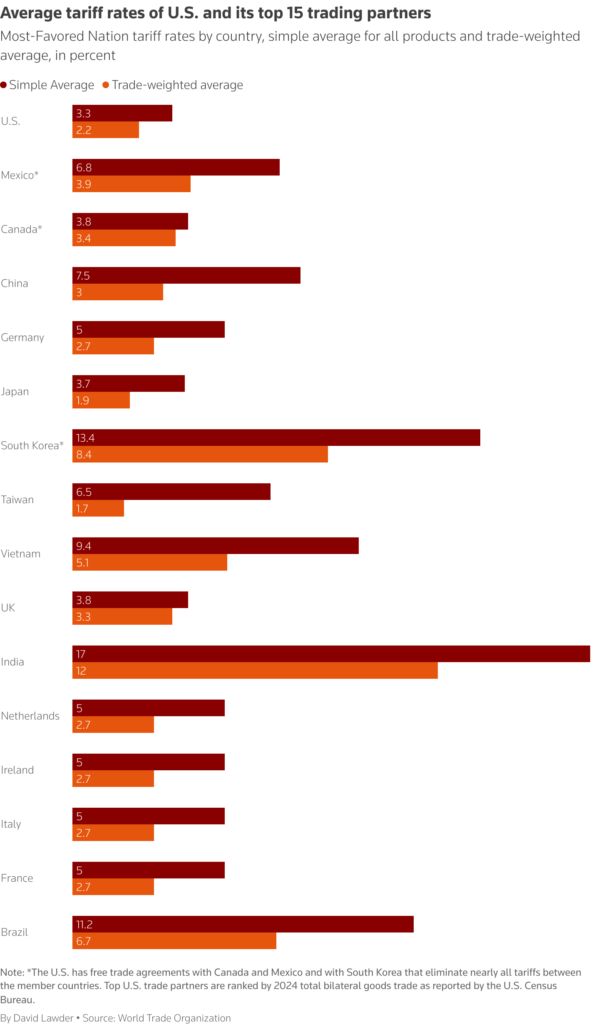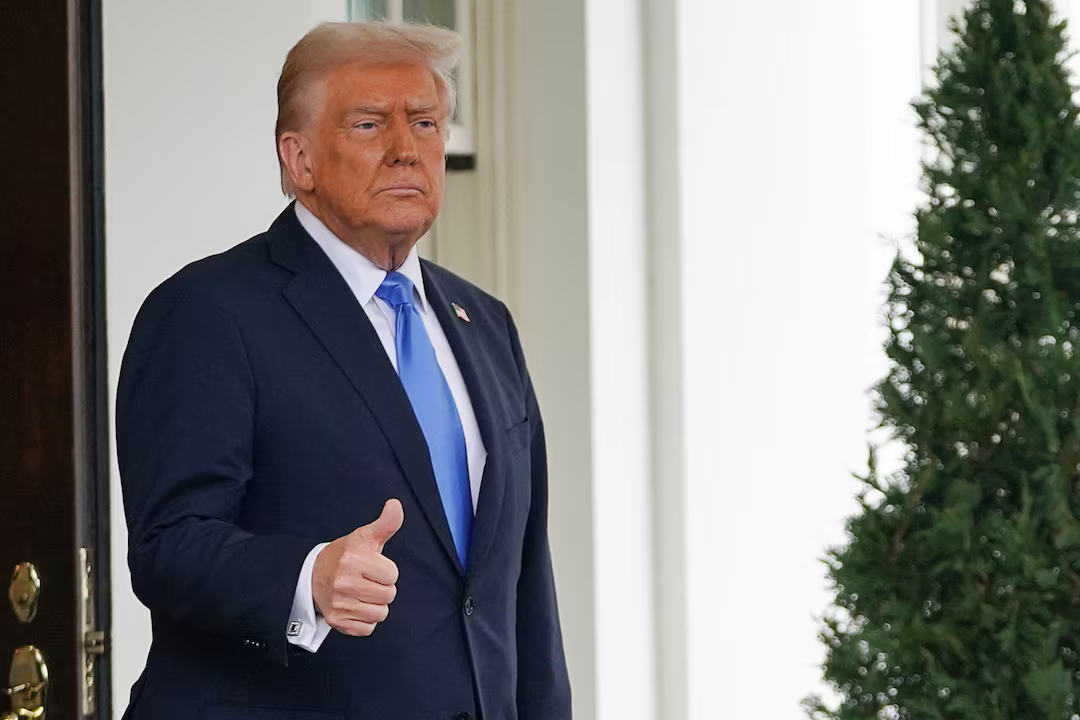President Donald Trump is considering invoking a long-dormant provision of the 1930 Trade Act to impose reciprocal tariffs on countries that maintain higher import duties on U.S. goods, a move that could significantly alter the global trade landscape. This decision signals the administration’s intent to take immediate action in addressing what Trump has long criticized as unfair trade imbalances, particularly with key economic partners such as the European Union, China, and India. The proposed tariffs would be enforced under Section 338 of the Trade Act of 1930, a law that allows the president to impose duties of up to 50% on imports from nations that engage in discriminatory trade practices against the United States. Although the law has been in existence for nearly a century, there are no known records of it ever being enforced, making its potential revival a notable departure from conventional trade policies. The provision allows the U.S. to respond to foreign tariffs, taxes, regulations, or other trade restrictions that are not applied equally to all trading partners and that disadvantage American businesses.
Trump has repeatedly voiced his frustration over the U.S. charging significantly lower tariff rates than many of its trading partners, and the European Union’s 10% import duty on automobiles has been a particular point of contention. By comparison, the U.S. tariff on passenger cars is just 2.5%, a discrepancy the president has labeled as unfair. Trade and legal experts suggest that Section 338 offers a legal avenue to immediately impose tariffs without the lengthy investigative processes required under other trade laws. Dan Cannistra, a partner at Crowell & Moring, stated that this provision provides the administration with a direct route to challenging discriminatory practices, saying, “I think that is exactly the path that they’re going to follow. They’re going to tell the EU: ‘You’re giving Korea zero percent on cars, you’re giving 10% to the U.S. You’re discriminating against us.’”
The revival of Section 338 reflects a broader strategy within the Trump administration to prioritize trade tools that allow for rapid implementation of tariffs, rather than relying on mechanisms such as Section 232, which governs national security tariffs on steel and aluminum, or Section 301, which was used extensively during Trump’s first term to counter China’s trade practices. Those measures require months of investigations and public comment periods before tariffs can be imposed. By contrast, Section 338 allows the president to act unilaterally, with new tariffs taking effect within just 30 days. Nazak Nikakhtar, a former senior Commerce Department official and now a partner at Wiley Rein, said that while this provision was previously examined by the Trump administration, it was not pursued at the time in favor of more familiar trade tools. She emphasized that “its benefit is that it’s more immediate,” suggesting that the urgency of Trump’s trade agenda in his second term makes Section 338 an appealing option.
The proposed action is likely to spark strong reactions from international trading partners and could challenge the foundations of the post-World War II global trade framework. The 1947 General Agreement on Tariffs and Trade (GATT) and its successor, the World Trade Organization (WTO), established the principle of Most Favored Nation (MFN) status, which requires countries to apply the same tariff rates to all WTO members unless a specific trade agreement states otherwise. A unilateral move by the U.S. to enforce Section 338 tariffs could be perceived as undermining this system, leading to retaliatory trade measures and potential disputes at the WTO. Former U.S. trade representative John Veroneau warned that such a decision would send shockwaves through global trade institutions, saying, “It would be an earthquake in Geneva to announce U.S. intentions to move away from unconditional MFN and negotiate our tariff schedules on a bilateral basis.”
Historically, Section 338 has been cited as a potential trade remedy but has never been put into practice. During the 1930s, the Roosevelt administration considered using it against France, Germany, Spain, and Japan but ultimately refrained. In 1949, then-Secretary of State Dean Acheson referenced the provision in a telegram regarding discriminatory Chinese trade policies under Communist rule, indicating that the law could theoretically be used to exclude Chinese imports entirely. This remains the last known official U.S. government reference to Section 338, highlighting its relative obscurity in trade discussions until now.
The scope of the proposed tariffs remains unclear, and the administration has not specified whether they will target specific industries or apply broadly across multiple sectors. However, Trump has previously expressed concern over high tariffs in emerging economies such as India and Brazil, as well as non-tariff barriers in the European Union and Japan. White House economic adviser Kevin Hassett has pointed to India’s high tariffs as a major impediment to U.S. exports, citing WTO data that shows India’s trade-weighted average MFN tariff rate at 12%, compared to 2.2% in the United States. Trump’s approach suggests that his administration may not only focus on direct tariff disparities but also on regulatory policies that restrict U.S. access to foreign markets. For instance, regulations on genetically modified crops, vehicle emissions standards, and industrial subsidies could all be scrutinized under this new trade strategy.

The potential implementation of Section 338 is expected to trigger legal challenges, as the administration will need to prove that the tariffs imposed by foreign nations constitute discrimination against U.S. commerce. However, trade lawyers argue that such evidence is readily available in existing tariff schedules, with Dan Cannistra noting, “There is no finding other than that discrimination exists, and you could find it probably in 30 seconds looking at the competing tariff schedules.” Even so, critics warn that invoking a nearly century-old trade law to justify immediate tariff increases could set a dangerous precedent, further destabilizing the already fragile global trade system.
The Trump administration’s decision to explore this aggressive trade measure aligns with its broader efforts to leverage executive authority to achieve swift policy changes. In recent weeks, Trump has also taken steps to raise aluminum tariffs to 25%, align them with steel tariffs, and revoke previous exemptions on metals imports. In addition, his administration has invoked the International Emergency Economic Powers Act to impose new tariffs on Chinese goods and has set a deadline for imposing 25% tariffs on Mexican and Canadian imports over concerns related to fentanyl trafficking and border security. These moves signal a broader shift toward protectionist trade policies that prioritize immediate action over multilateral negotiations.
As the White House prepares to finalize its trade strategy, businesses and foreign governments alike are closely monitoring the situation, assessing the potential impact on global supply chains, trade partnerships, and economic growth. The outcome of this policy shift could have lasting consequences for international commerce, potentially reshaping the structure of global trade relations in the years to come.
Stay ahead with the latest news on global innovation, leadership, entrepreneurship, business, and tech. Join us on WhatsApp or Telegram for real-time updates. Have a report or article? Send it to report@theinnovationtimes.com. Follow us on X (Twitter), Instagram, LinkedIn, YouTube, Pinterest, and Facebook for more insights and trends.



